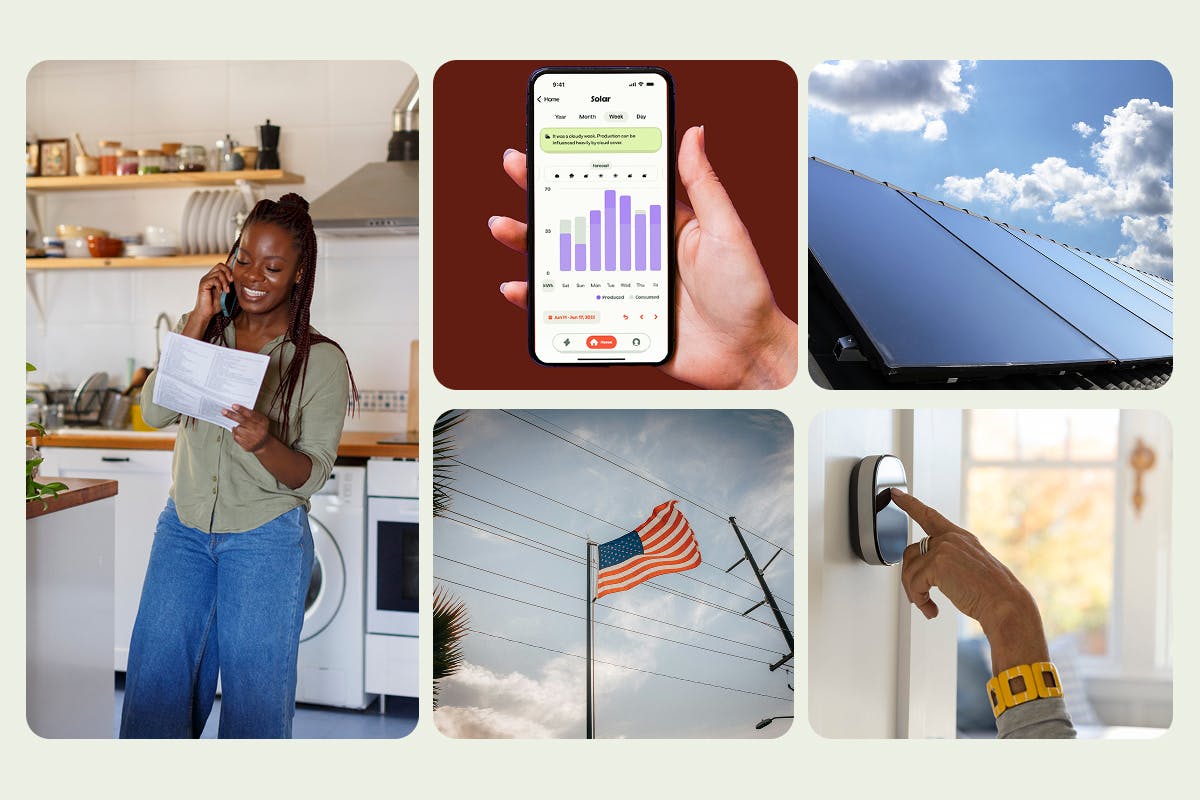Low-Flow Faucets and Showerheads Can Save You Energy and Money
Last edited

Author
Andrew Giermak
Solar and Electrification Writer and Editor

Editor
Andrew Blok
Electrification and Solar Writer and Editor

Water heating is one of the three largest energy uses at home, according to the US Energy Information Administration. And, if you have a faucet or showerhead younger than about 30 years old, you likely have a lower-flow water fixture.
So why go lower? Saving money, energy, and water are the main reasons to switch to modern low-flow faucets and showerheads. You can save money by using less hot water and earning rebates on new, upgraded sink and shower fixtures.
See how much you can save with home energy changes
What do low-flow faucets and showerheads do?
Low-flow faucets and showerheads have flow restriction devices that allow you to use less water while maintaining the water pressure you want from your bathroom and kitchen fixtures.
Older faucets and showerheads have flow rates of 3.0-7.0 gallons per minute. Current government regulations cap new showerheads at 2.5 gallons per minute and new faucets at 2.2. Low-flow rates are 2.0 gallons per minute or less for showerheads and 1.5 or less for faucets.
There are low-flow toilets as well. Old toilets had a GPF (gallon per flush) of 3.5-7.0. Current toilets have a maximum of 1.6 gallons per flush and low-flow toilets only 1.28.
Low-flow faucets and showerheads save you money in two ways. You use less water, to save on your water bill; and you use less hot water, to save on your gas or electric bill.
According to the Environmental Protection Agency’s WaterSense program, which certifies the most efficient low-flow faucets, showerheads, and toilets, changing an old showerhead to a WaterSense-approved showerhead can save about $70 a year in water and energy costs. Changing all fixtures in a home and having all EPA EnergyStar appliances can add up to about $380 a year in average savings and saving about 15,700 gallons of water a year.
| Old GPM rate | Current maximum GPM rate | Low flow GPM rate | |
|---|---|---|---|
| Faucets | 3.0-7.0 | 2.2 | 1.5 |
| Showerheads | 3.0-5.5 | 2.5 | 2.0 |
See how much you can save with home energy changes
What are the benefits of low-flow water fixtures?
Here are some of the many benefits of low-flow showerhead and faucets.
- Save money: Using less hot water is a double savings as you save on your water bill and on your energy bill (whether you have gas or electric water heating). Water heating accounts for about 18% of a home's energy consumption and is a home’s second-largest energy expense according to the US Department of Energy.
- Save water: Conserving water and using less energy on water heating are contributions to a better environment. Using less gas or utility electricity means fewer greenhouse gas emissions and a smaller carbon footprint.
- Easy to install: Low-flow showerheads and faucets are typically easy to install without professional help, as well as a relatively inexpensive energy efficiency step.
- Performance: Modern low-flow fixtures are engineered to give you the water pressure you want and expect.
- Rebates: Some localities and utilities give rebates for low-flow water fixtures. The EPA’s WaterSense program is the best place to find fixtures eligible for rebates and certified to be the best low-flow faucets and showerheads.
Saving water and saving money in your home
There are other steps to save money on water heating at home. One quick but impactful step can be turning your water heater’s temperature down to 120 F. Most of us won’t notice the difference. Your dishwasher will still work with hot water at that set temperature and lowering the temperature can reduce the risk of scalding, especially for older people and children.
Washing your laundry in cold water and checking regularly for leaking pipes or fixtures can also save energy, water, and money.
You can find more ways to save energy and earn discounts on energy-saving devices with the new Palmetto app or Palmetto’s Savings Maximizer.
See what home electrification can do for you:
Frequently asked questions
How common are low-flow water fixtures in homes now?
Nearly all faucets and showerheads installed since 1994 and toilets since 1992 have had to meet federal regulations about lower water usage. A 2019 report by Plumbers Manufacturers International states 45.4% of new showerheads and 40.1% of new bathroom faucets meet EPA WaterSense low-flow standards.
How much does water heating cost in an average home?
Water heating totals about 18% of a home’s average energy consumption. Your actual cost will depend on factors such as energy rates, your water heater’s fuel type, your hot water temperature, and if you have a conventional tank or tankless water heater. Estimates broadly range from $75-$600 a year.


